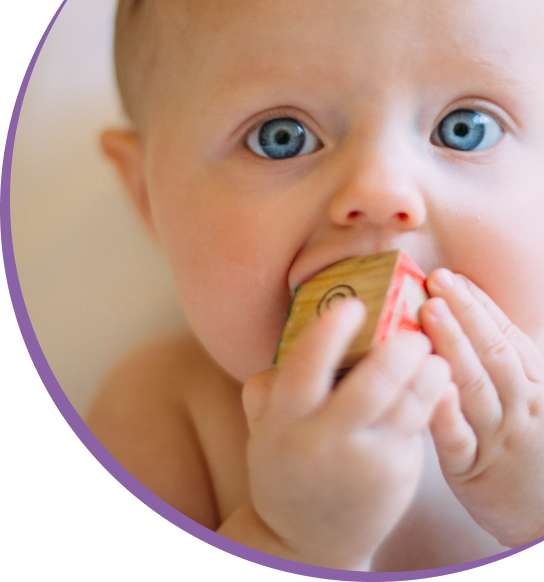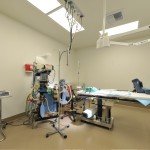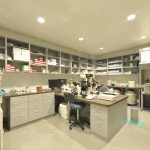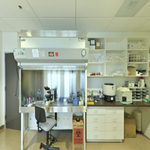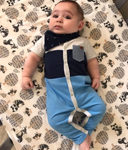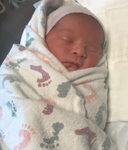About
Success
Treatment
Financial
Resources
Blog
Contact
Site Tools

Baby Girl Born From An Embryo That Had Been Frozen For 27 Years – Here Is How
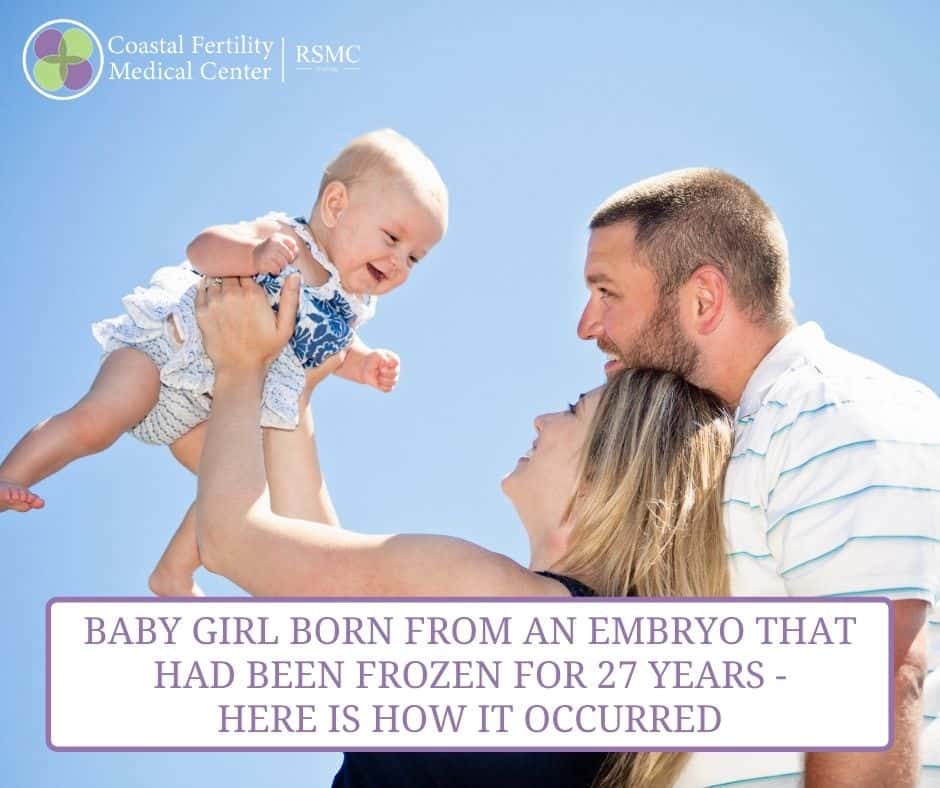
Science is capable of doing many wonderful things. Take Tina’s parenthood journey for example. Reproductive technology helped her become a mother with a donor embryo frozen when she’s barely one year of age.
Tina Gibson, 28, made the headlines when she gave birth to a baby with a donor embryo that was frozen back in Oct. 1992. The embryo was thawed after 27 years and inserted in Tina’s womb, and the result is a baby girl named Molly.
Tina and her husband, Ben, claimed the embryo is from the National Embryo Donation Center (NEDC) based in Knoxville.
“We didn’t realize until it made the news that it was kind of a big thing,” she said.
Molly’s successful implantation and delivery set a new record for the longest frozen embryo to be transferred and resulting in a live birth. The embryo was frozen for a total of 27 years, 3 months, and 27 days.
The earlier record was held by Molly’s older sister, Emma, who was born from a 24-year-old frozen embryo. Tina was also in the news with Emma’s birth back in November 2017.
In her interview with CNN, Tina said she was shocked to find out that the embryo was only one year younger than she was. She joked,
“This embryo and I could have been best friends. I just wanted a baby. I don’t care if it’s a world record or not.”
Tina and Ben had been trying to have children for many years. Ben has a condition known as cystic fibrosis – one of the common causes of male infertility – and the couple was worried they could transfer the condition to their baby. This was why they considered embryo adoption.
Molly and Emma are both genetically-related siblings. Tina said,
“The fact that we are holding these miracles, it’s unbelievable that God would just pour his blessings on us like that. We don’t deserve it, that’s for sure.“
WHAT IS EMBRYO DONATION?
According to the American Society for Reproductive Medicine (ASRM), when couples undergo IVF due to infertility, they often have additional fertilized eggs (embryos) frozen and stored for later use. Some of those end up unused.
A lot of couples will have additional embryos to freeze and store after completing their IVF cycle. And the younger a female is when she’s undergoing IVF, the higher the odds of having top-quality eggs to freeze. Based on the number of babies a woman wants, she may have many eggs remaining after she has completed her family.
In certain cases, a donor embryo can be made using donor eggs and donor sperm solely for the aim of donation. And couples who don’t wish to use all their embryos can take any of the following routes:
- Donate the remaining embryos to research
- Keep them in their frozen state
- Thaw them and allowed them to be destroyed
- Donate them to an infertile couple
Most people choose to freeze their embryos – and keep them frozen. In fact, a study estimates that around 1 million frozen human embryos are presently stored in the United States alone.
Egg freezing technology is now more advanced, and IVF is more accessible to people who need it. These are the reasons why it’s more common to have excess embryos than what one needs to build his family.
Hence, embryo donation is getting more and more popular, and its success rates can be pretty impressive.
HOW CAN AN EMBRYO REMAIN FROZEN FOR 27 YEARS?
Embryos are preserved in liquid nitrogen, which is an effective means of freezing. Once frozen, embryos can be stored for many years since they are held stable by the freezing procedure.
In the past, embryos were frozen via a slow freezing process, which can lead to the formation of ice crystals and cause damage to the embryos. But nowadays, most programs utilize a fast-freezing process known as vitrification, in which embryos are cooled quickly, causing little-to-no harm.
However, embryos frozen using slow freezing methods are still capable of surviving the freezing and thawing process. When a donor embryo is adopted, it is just thawed and inserted into the woman’s womb, like any other embryo used for IVF.
Note: it’s uncommon for donor embryos to be frozen for this long. The embryo freezing protocols that were used 27 years ago are not that good, so there’s little chance that such an embryo would survive the freezing and thawing process. Proper screening is needed to find the viable embryo and avert the chances of miscarriage.
Coastal Fertility is delighted to see this lovely family grow with their miracle babies. we have helped many infertile couples become parents through IVF, donor eggs, frozen embryo transfer, etc.
If you are also considering frozen embryo transfer to build your family or have questions regarding infertility treatments, have a consultation with the leading fertility doctors.
Related Post
-
What is Azoospermia – Types, Causes, Symptoms, and Treatments
-
15 Things Doctors Want Women in Their 30s to Know About Their Fertility
-
Ovarian Hyperstimulation Syndrome (OHSS) – Causes, Risks, and Treatments
-
This IVF Pregnancy Success Video Is Going Viral On TikTok, And It’s The Most Adorable Announcement
-
End your week with these happy and heartwarming stories and videos
-
Fertility clinic shares IVF pregnancy success with parents-to-be in adorable video
Halloween 2019
Each year, Coastal Fertility Medical Center’s staff hosts a fun get together for our former patients and their families. View more photos from our 28th annual Miracle Babies Halloween event!Popular Searches
- Orange County Fertility Clinic
- Irvine, California Fertility Center
- Coastal Fertility Medical Center
- Free Fertility Seminar, Irvine CA
- In Vitro Fertilization and ICSI
- Best Orange County Infertility Doctor
- Southern California Fertility Specialist
- PGD, PGS Orange County
- Egg Donation and Surrogacy
Address
Coastal Fertility Medical Center15500 Sand Canyon Avenue
Suite 100
Irvine, CA 92618
©2024 | Sitemap | HIPAA/Privacy | Disclaimer and Privacy Policy
News from our Top Doctors

Our fertility clinic focuses on helping you build your family regardless of your sexual orientation or the gender you choose to identify with. We are even taking further steps to make LGTB people feel more welcome at our fertility clinic. Each of our patient-facing staff goes through LGTB training to let family-building clinicians provide necessary support and make you feel highly welcome.

Coastal Fertility Medical Center offers one of the most advanced fertility treatments and is completely transparent regarding the costs of procedures and any other expenses that you may have to pay before commencing your treatment. This differentiates us from some fertility clinics that reduce prices before the signing of the contract but charge you extra later on. We make sure our patients are well aware of any possible extra pricing that may occur over the course of their treatment.

The infertility industry is currently segmented, with each service or treatment being handled by a different provider. Our all-inclusive model simplifies an otherwise complex and difficult process. We are here to revolutionize the infertility industry by offering a one-stop-service model to assist our patients through infertility challenges while reducing physical, emotional, and financial risks.

Our globally respected team of specialists are helping improve IVF technologies to enter into a generation of better outcomes for infertility. Although you’ll have a doctor guiding you, you are also going to benefit from the experience and insights of other doctors during case review collaboration meetings, which take place every week. So, you won’t just rely on the expertise of a specialist but benefit from the knowledge of many reputed fertility experts.

Our team specializes in difficult cases and help patients who may have been considered “hopeless” at other fertility clinics. Thanks to our personalized solutions, expertise, and internal collaboration, weare able to maximize pregnancy success rates that are well above the industry average, even in difficult infertility cases.

We know that every situation is different and that everyone requires different treatments. Unlike facilities that take “a one-size-fits-all” approach for all cases, our fertility specialists use more than 40 customized protocols to raise the chances of success. The customized approach even extends to our fertility laboratory. Our on-site lab director and his highly-experienced team nurture every embryo and egg to increase the odds of success of each cycle.

Coastal Fertility Medical Center offers one of the most advanced fertility treatments and is completely transparent regarding the costs of procedures and any other expenses that you may have to pay before commencing your treatment. This differentiates us from some fertility clinics that reduce prices before the signing of the contract but charge you extra later on. We make sure our patients are well aware of any possible extra pricing that may occur over the course of their treatment.
Thanks for Joining!
We will be sending new updates soon.
You’re all set!
Your new patient forms have been submitted and received. We look forward to seeing you at your appointment.
Send us a message, we’ll be happy to answer any questions!
Please complete the form so we can best serve and help you with your journey towards parenthood.
On Demand Seminar Registration
Following the Preimplantation Genetic Screening process, which helps ensure there are normal chromosome numbers and detects possible genetic disorders, the most healthy embryo(s) are selected to be implanted into your or your chosen surrogate’s womb. 2 weeks after the transfer of the embryo, your physician will conduct a final blood test to determine the level of hCG (human chorionic gonadotropin) in your body. Increased hCG levels usually indicate a positive pregnancy test.

For fertilization to take place, the collected egg and sperm are combined in a petri dish and cultured in an embryo incubator. This dish is closely watched to check whether any of the eggs have been fertilized. Once the egg is fertilized, it is referred to as an embryo or a blastocyst on the 5th day of development. Our in-house embryologist carefully nurtures every embryo to the right time, even if it means working outside the standard business operating hours. For instance: If an oocyte is not mature, our laboratory will wait for it to mature and then ICSI it at the right time.

The egg retrieval is a slightly invasive medical procedure that takes about 20 to 30 minutes. You will be given an anesthetic to make you sleep for the duration of the procedure. Using ultrasound technology, your doctor will harvest your eggs transvaginally with a small, hollow needle connected to an ultrasound probe. Once your eggs are collected, your partner’s semen or donor sperm you have pre-selected is used for fertilization. The sperm are washed and prepared, and the top-quality sperm extracted is used to fertilize the eggs.

Your doctor will create a customized medication schedule that contains information about the fertility medications and hormone injections you have to take. Medication and injections are taken to encourage your ovaries to mature a large number of eggs for fertilization. Since women don’t respond to fertility drugs and hormones the same way, personalized protocols are crucial to the IVF cycle success. At Coastal Fertility, we will monitor you closely, letting you understand the changes occurring in your body and keeping track of how your egg follicles are growing.

On-site consultations typicallyinclude a standard fertility evaluation, consisting of a physical examination, complementary follicular ultrasound, and testing to enable your doctor to know your present fertility status and draw up a treatment plan.

This consultation includes a detailed medical evaluation with a doctor. You and your physician will review your health records and have enough time to talk about your goals and get answers to your questions. We recommend that you jot down all your questions before the visit to allow you to make the best use of the time spent with your doctor.

Your Reproductive Endocrinologist will take all factors into consideration and create a comprehensive plan of care, otherwise known as the treatment plan. This plan will include treatment recommendations from the physician and enable your financial coordinator to make a precise quotation once you meet.

Our globally respected team of specialists are helping improve IVF technologies to enter into a generation of better outcomes for infertility. Although you’ll have a doctor guiding you, you are also going to benefit from the experience and insights of other doctors during case review collaboration meetings, which take place every week. So, you won’t just rely on the expertise of a specialist but benefit from the knowledge of many reputed fertility experts.

The infertility industry is currently segmented, with each service or treatment being handled by a different provider. Our all-inclusive model simplifies an otherwise complex and difficult process. We are here to revolutionize the infertility industry by offering a one-stop-service model to assist our patients through infertility challenges while reducing physical, emotional, and financial risks.

Our fertility clinic focuses on helping you build your family regardless of your sexual orientation or the gender you choose to identify with. We are even taking further steps to make LGTB people feel more welcome at our fertility clinic. Each of our patient-facing staff goes through LGTB training to let family-building clinicians provide necessary support and make you feel highly welcome.

We know that every situation is different and that everyone requires different treatments. Unlike facilities that take “a one-size-fits-all” approach for all cases, our fertility specialists use more than 40 customized protocols to raise the chances of success. The customized approach even extends to our fertility laboratory. Our on-site lab director and his highly-experienced team nurture every embryo and egg to increase the odds of success of each cycle.

Our team specializes in difficult cases and help patients who may have been considered “hopeless” at other fertility clinics. Thanks to our personalized solutions, expertise, and internal collaboration, weare able to maximize pregnancy success rates that are well above the industry average, even in difficult infertility cases.

Upon your arrival, you will check in with a Patient Care Coordinator. We will obtain your insurance information for benefits verification, a copy of your identification and take a picture for your electronic medical chart
Welcome to Coastal Fertility Family
Coastal Fertility is the leading provider of fertility solutions located in Orange County. Join us to get free updates on fertility news, treatments, infertility solutions and more.
Welcome to Coastal Fertility Family
Coastal Fertility is the leading provider of fertility solutions located in Orange County. Join us to get free updates on fertility news, treatments, infertility solutions and more.
